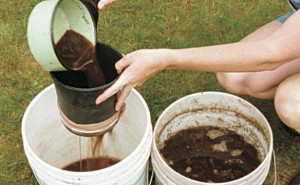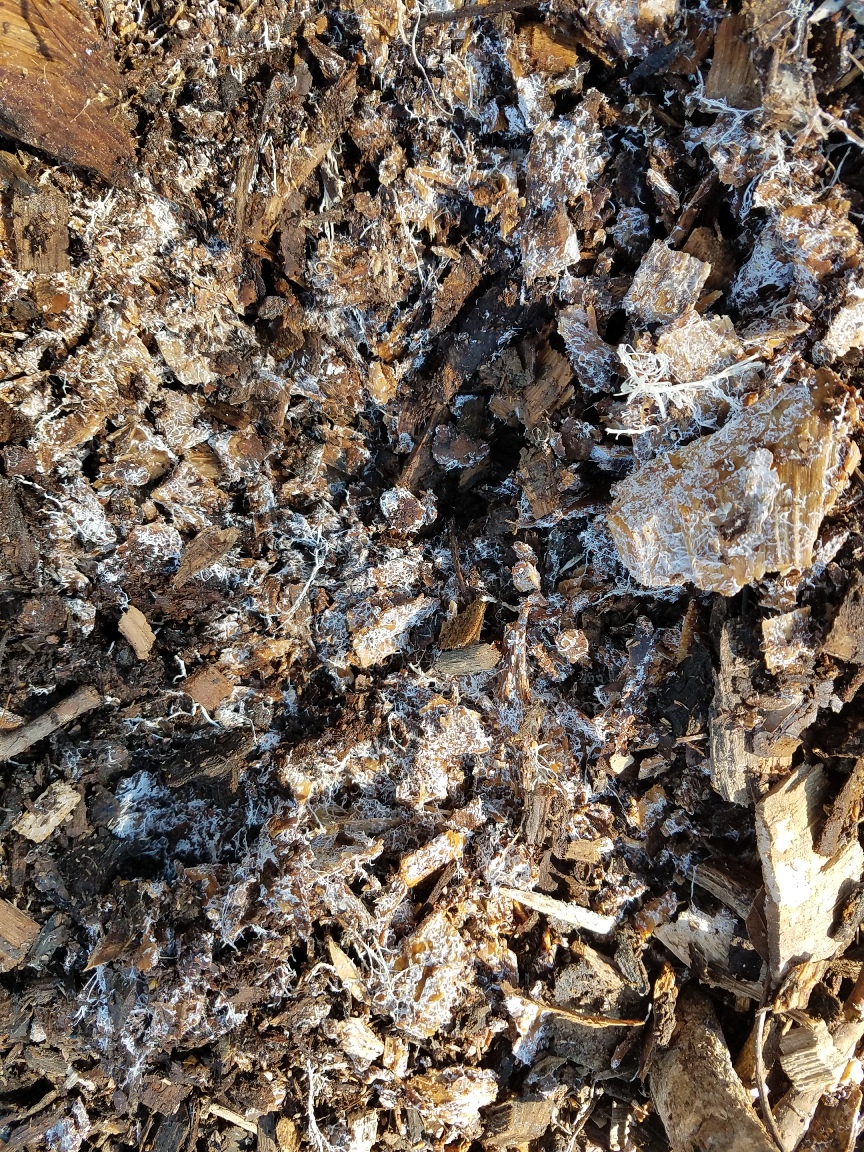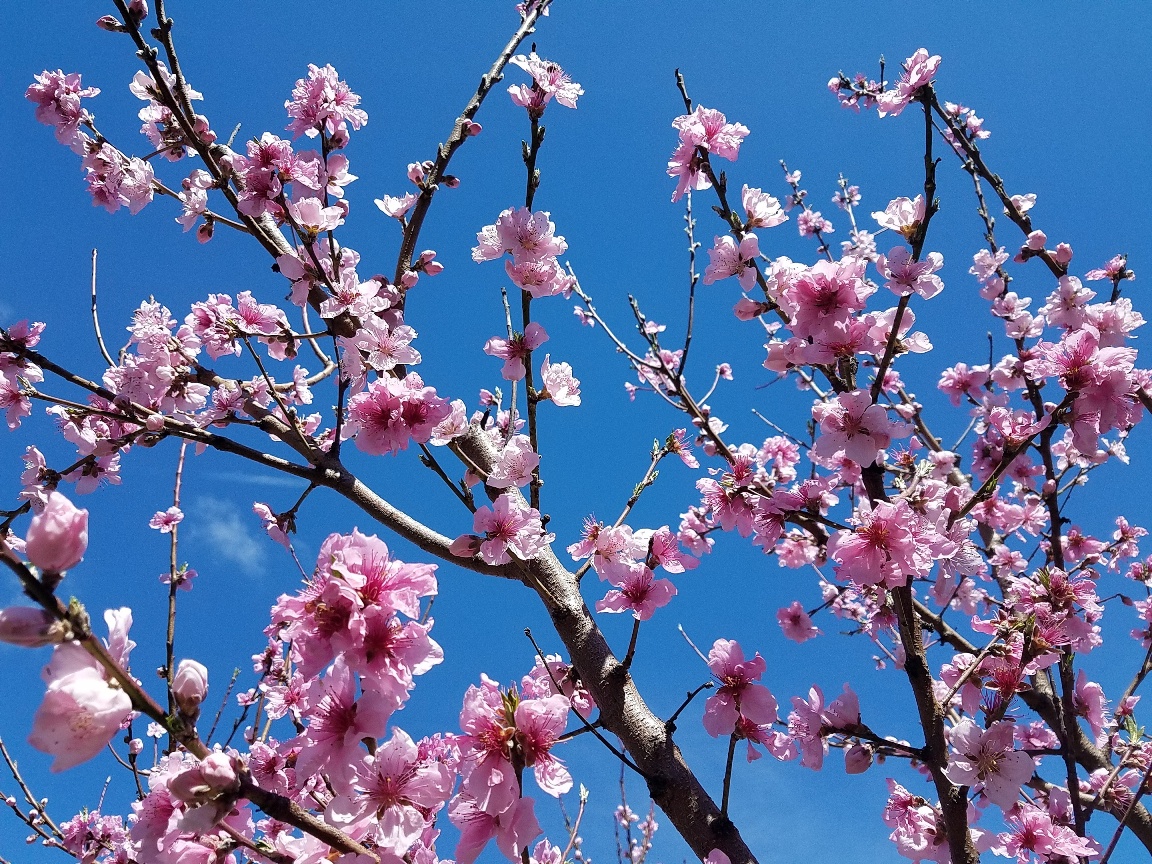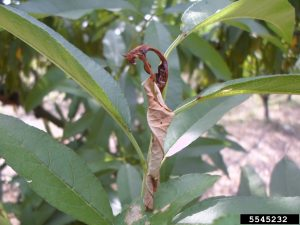POP TIPS: April Orchard Care
Phil Forsyth
Spring Orchard Sprays
Check out our brand new blog post about Effective Microorganisms (EM-1), including how to make your own mother culture and a full recipe for holistic orchard sprays!
Apply holistic orchard sprays. Holistic sprays are composed of compost tea, liquid fish/seaweed, neem oil, and/or effective microbes. For best tree health and resistance to disease, apply up to 4 times in the spring (after bud break, at first pink of flowers, after petal fall, and two weeks after petal fall).

Compost tea is one of the most effective ways to boost soil and plant health; early spring applications can help build resilience to pests and disease.
Depending on specific pest or disease problems, some orchardists might also consider other organic sprays including the ones listed below. In particular, plants that have suffered severe crop loss from fungal diseases (like brown rot, mildew, or scab) may be candidates for an early spring sulfur or copper spray. This is best applied shortly before or after bloom, so the time is now if you want to do this.
Check out POP’s guides to orchard applications of:
• Compost Tea Sprays for Orchards
• Sulfur Sprays and Early Spring Management Techniques
• Bt: Bacillus thuringiensis Orchard Sprays
Spring Orchard Planting
It is safe to plant new orchard plants as soon as the ground can be worked. POP's preferred spring planting period is between the beginning of April and mid May, so plants have some time to get established before the heat of summer hits. Remember that fall is also great for planting most orchard plants, and fall plantings actually have better survival rates!
Need some ideas on what to plant that will perform well in Philadelphia?
Fruit for Your Yard Workshop @ Bartram's Garden
Residents of Southwest Philadelphia and other low tree cover zip codes can sign up to receive a free fruit tree (fig, pomegranate, or plum) via TreePhilly at the workshop!
POP is also holding a Plant Sale and Open House event at our new orchard and nursery space at The Woodlands on Saturday, May 14.
Spring Weeding and Compost/Mulch Application
Yes, spring weeds are already popping up and never too early to get ahead of them! Also a good time to trim back any dead herbaceous material from companion plantings of flowers, herbs, etc.
Building healthy soil is key to supporting trees’ health, resilience and yields. Weed around the base of trees, and spread at least one or two inches of chipped winter prunings, shredded leaves, and/or mulch or compost in the early spring. Check out POP’s guide to Ramial Wood Chips and Weeding in Place.

Wood chips, especially ramial ones (which include tips of branches) are actually great for soil building in orchards, helping to foster fungal networks of mycelium (white strands in photo) that support tree health and help transport water and nutrients in collaboration with root systems.
Early Spring and Emergency Pruning
Check out our newly posted video on pruning raspberries and blackberries!
While optimal dormant pruning season is now behind us, those of you who waited on your peach trees should prune them now (peaches are the only fruit tree typically pruned during or immediately following flowering).

Unlike other fruit trees, peaches are best pruned during or after bloom.
For all other trees, most pruning should be limited to emergency pruning only:
Keep an eye out for any diseased, damaged, or dead wood that should be pruned away no matter the season. Pay special attention to the base of trees - especially of the stone fruit varieties: apricots, peaches, plums, nectarines - and prune away root suckers, the quick upright growth that can be a cover for dreaded borers, which make a home beneath trunk wood.
Remember: use sharp, rust-free hand tools and sanitize between trees at the very least, and between every cut if the tree you’re tending has had previous conditions. For easy disinfecting, we recommend carrying a spray bottle with you of rubbing ( isopropyl) alcohol or a bleach solution (1 part bleach: 10 parts water) to wipe down tools.
Pest and Disease Monitoring & Identification

Phil Forsyth
Spring Orchard Sprays
Apply holistic orchard sprays. Holistic sprays are composed of compost tea, liquid fish/seaweed, neem oil, and/or effective microbes. For best tree health and resistance to disease, apply up to 4 times in the spring (after bud break, at first pink of flowers, after petal fall, and two weeks after petal fall).

Compost tea is one of the most effective ways to boost soil and plant health; early spring applications can help build resilience to pests and disease.
Depending on specific pest or disease problems, some orchardists might also consider other organic sprays including the ones listed below. In particular, plants that have suffered severe crop loss from fungal diseases (like brown rot, mildew, or scab) may be candidates for biofungicides and/or an early spring sulfur or copper spray. These are best applied shortly before or after bloom, so the time is now if you want to do this.
Spring Orchard Planting
It is safe to plant new orchard plants as soon as the ground can be worked. POP's preferred spring planting period is between the beginning of April and mid May, so plants have some time to get established before the heat of summer hits. Remember that fall is also great for planting most orchard plants, and fall plantings actually have better survival rates!
POP is also holding a Plant Sale and Open House event at the POP Learning Orchard and edible plant nursery at The Woodlands on Saturday, April 29.
Spring Weeding and Compost/Mulch Application
Yes, spring weeds are already popping up and never too early to get ahead of them! It's also a good time to trim back any dead herbaceous material from companion plantings of flowers, herbs, etc.
Building healthy soil is key to supporting trees’ health, resilience and yields. Weed around the base of trees, and spread at least one or two inches of chipped winter prunings, shredded leaves, and/or mulch or compost in the early spring. Check out POP’s guide to Ramial Wood Chips and Weeding in Place.

Wood chips, especially ramial ones (which include tips of branches) are actually great for soil building in orchards, helping to foster fungal networks of mycelium (white strands in photo) that support tree health and help transport water and nutrients in collaboration with root systems.
Early Spring and Emergency Pruning
While optimal dormant pruning season is now behind us, those of you who waited on your peach trees should prune them now (peaches are the only fruit tree typically pruned during or immediately following flowering).

Unlike other fruit trees, peaches are best pruned during or after bloom.
For all other trees, most pruning should be limited to emergency pruning only:
Keep an eye out for any diseased, damaged, or dead wood that should be pruned away no matter the season. Pay special attention to the base of trees - especially of the stone fruit varieties: apricots, peaches, plums, nectarines - and prune away root suckers, the quick upright growth that can be a cover for dreaded borers, which make a home beneath trunk wood.
Remember: use sharp, rust-free hand tools and sanitize between trees at the very least, and between every cut if the tree you’re tending has had previous conditions. For easy disinfecting, we recommend carrying a spray bottle with you of rubbing ( isopropyl) alcohol or a bleach solution (1 part bleach: 10 parts water) to wipe down tools.
Pest and Disease Monitoring & Identification

Phil Forsyth
Spring Orchard Sprays
Apply holistic orchard sprays. Holistic sprays are composed of compost tea, liquid fish/seaweed, neem oil, and/or effective microbes. For best tree health and resistance to disease, apply up to 4 times in the spring (after bud break, at first pink of flowers, after petal fall, and two weeks after petal fall).

Compost tea is one of the most effective ways to boost soil and plant health; early spring applications can help build resilience to pests and disease.
Depending on specific pest or disease problems, some orchardists might also consider other organic sprays including the ones listed below. In particular, plants that have suffered severe crop loss from fungal diseases (like brown rot, mildew, or scab) may be candidates for biofungicides and/or an early spring sulfur or copper spray. These are best applied shortly before or after bloom, so the time is now if you want to do this.
Check out POP’s guides to orchard applications of:
• Compost Tea Sprays for Orchards
• Biofungicides: Serenade and Regalia
• Sulfur Sprays and Early Spring Management Techniques
• Bt: Bacillus thuringiensis Orchard Sprays
Spring Orchard Planting
It is safe to plant new orchard plants as soon as the ground can be worked. POP's preferred spring planting period is between the beginning of April and mid May, so plants have some time to get established before the heat of summer hits. Remember that fall is also great for planting most orchard plants, and fall plantings actually have better survival rates!
POP is also holding a Plant Sale and Open House event at the POP Learning Orchard and edible plant nursery at The Woodlands on Saturday, May 18.
Phil Forsyth, Co-Executive Director
